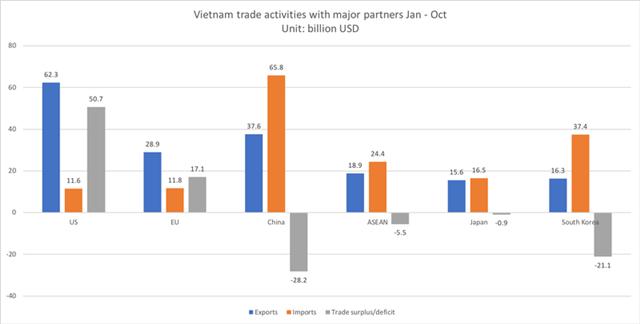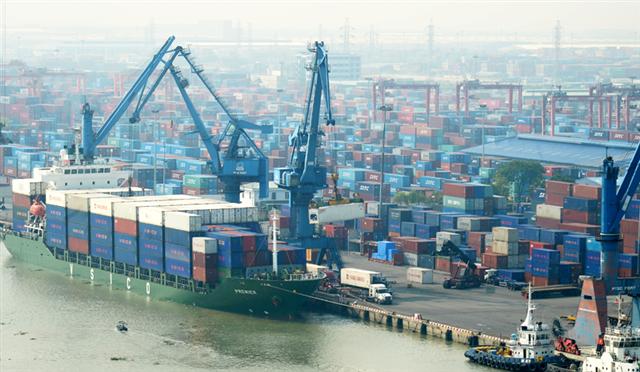Vietnam trade surplus hits new record of US$18.72 billion in 10-month
Vietnam trade surplus hits new record of US$18.72 billion in 10-month
Vietnam's trade turnover is likely to reach US$439.82 billion in the January – October period, a slight increase from the US$428.63 billion in the same period last year.
Vietnam earned an estimated trade surplus of US$2.2 billion in October and consequently a record surplus of US$18.72 billion in the January–October period, compared to a US$9.01 billion surplus recorded in the same period last year, the General Statistics Office (GSO) has said in a monthly report.

Data: GSO. Chart: Ngoc Mai.
|
In October, Vietnam has exported goods worth an estimated US$26.7 billion, down 1.7% inter-monthly but up 9.9% year-on-year, while imports are estimated to increase by 1.2% month-on-month and 10.1% year-on-year to US$24.5 billion.
Overall, Vietnam's trade turnover is likely to reach US$439.82 billion in the January – October period, a slight increase from the US$428.63 billion recorded in the same period last year. Of the total, exports could amount to US$229.27 billion, up 4.7% year-on-year, and imports are estimated at US$210.55 billion, up 0.4%.
In the first ten months of 2020, Vietnam had 31 export items earning more than US$1 billion each, accounting for 91.8% of total exports, and five with over US$10 billion, or 59.9%. On the other hand, 34 items have import value of over US$1 billion, or 89.4% of total.

Vietnam's trade turnover is likely to reach US$439.82 billion in the January – October period. Photo: Pham Hung.
|
In the January – October period, the US remained Vietnam's biggest export market, spending US$62.3 billion on Vietnamese goods, up 24% year-on-year, followed by China (US$37.6 billion, up 14%), and the EU (US$28.9 billion, down 3%).
Meanwhile, China continued to be Vietnam's largest supplier, selling US$65.8 billion worth of goods to Vietnam, up 6.2% year-on-year.
South Korea claimed the second place by exporting US$37.4 billion worth of goods to Vietnam, down 5.3% year-on-year, followed by ASEAN countries with US$24.4 billion, down 8.5%.



























